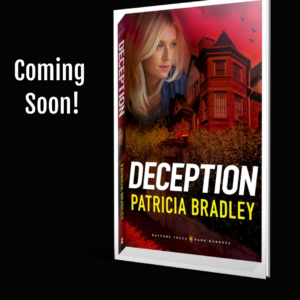by Patricia Bradley, @PTBradley1
Plot Points and Pinch Points– What the dickens are they? I’m so glad you asked. But first let me tell you a story.
Covid has been really hard—that’s as good a reason as any for me falling behind on my deadline back in December. But I really thought I had plenty of time to meet my deadline…after all, I had five months to write the book…I mean, there are five months between January and May…right?
You may not know this, but math was never my long suit. And because May is the fifth month didn’t mean I had five months to write that story, something I discovered on December 26, 2021. I had 500 words…
I’d been reading about Plot Points and Pinch Points in K. M. Weiland’s blogs. In the blogs, she lays out the timing of each plot point and pinch point. With only four months to write 90, 000 to 100,000 words (I’m not the fastest writer in the world) I felt I had nothing to lose by trying what I’d been reading.
Simply said, plot points are major events in a story that have a meaningful impact on the plot as a whole. In a three-act structure the first plot point comes at the end of ACT I and occurs around the 20-25% mark. It ends the setup of ACT I. It’s the doorway of no return—a door closes, thrusting the protagonist into the story and out of his Normal World.
The First Pinch Point occurs at the 37% mark and reminds the reader of the antagonist and what the stakes are for the protagonist if he doesn’t reach his goal. It “pinches” the protagonist.

Next is the Midpoint that occurs, as I’m sure you guessed, at the 50% mark. Up to the Midpoint, your character is reacting to the First Plot and Pinch Point, but at this Midpoint, he will learn something that will make him become proactive—he will begin to take definitive action against the antagonist which will span from the 50% mark to the 75% mark. Things are finally going the protagonist’s way and he seems to have the victory in hand. Then something happens that takes that victory away.
The Second Pinch Point occurs at the 62% mark and once again reminds the reader of the power of the antagonist and what’s at stake if the protagonist fails. Either he will die or his dream or career will die.
The Third Plot Point occurs at the 75% mark which is the low moment in your story. It’s when all is lost. The protagonist believes he’s beaten. It’s where he has to be completely honest with himself, and face the lie he believes but has pushed out of sight. The Third Plot Point once again changes the direction of the story. Here he must choose between what he wants and what he needs.
From the 75% mark to around the 88% mark, the protagonist questions his ability, his goal and even his own worth.
At the 88% mark, he faces the antagonist. From the 88% to the 98% mark, there is a fight to the death—one or the other must win. The Climax comes at the 98% mark—the protagonist’s goal is met. He’s won. Or if it’s a tragedy, he loses. But I write happily-ever-afters so he wins.
From 98%–100% is the wrap up.
I can’t tell you how much this has helped me write my stories. I don’t have to know what happens at each of these marks (after all, I’m a panster), just that something does and my brain supplies the rest.
Until next month…
Deception, Natchez Trace Park Rangers, Book 4
When ISB Ranger Madison Thorn arrives in Natchez to investigate a white-collar scheme, she has no idea she will be thrown back into the violent crimes division–or that it will get so personal. She’ll have to work with her childhood-enemy-turned-handsome-charmer to unravel the clues before it’s too late.

Patricia Bradley is a Carol finalist and winner of an Inspirational Readers’ Choice Award in Suspense, and three anthologies that included her stories debuted on the USA Today Best Seller List. She and her two cats call Northeast Mississippi home–the South is also where she sets most of her books. Her romantic suspense novels include the Logan Point series and the Memphis Cold Case Novels. Deception, the third book in the Natchez Trace Park Rangers series, releases August 2, 2022. She is now hard at work on a new series set in the Cumberland Plateau around Chattanooga, Tennessee. Her writing workshops include American Christian Fiction Writers online courses, workshops at the Mid-South Christian Writer’s Conference, the KenTen Retreat and Scrivenings Press Author Retreat where she was also the keynote. When she has time, she likes to throw mud on a wheel and see what happens.



Comments 1
Patricia, I so appreciate this post. I, too, “write to percentages” and have studied K. M. Weiland’s blog posts. Using the template you describe has been of great help to me in structuring my plots. While I would call myself a plantser (one who plans but allows room for surprises), I can vouch that writing to percentages has made a huge difference in my understanding of story structure.
Thank you so much for your post–and for all your posts which I greatly enjoy. 🙂